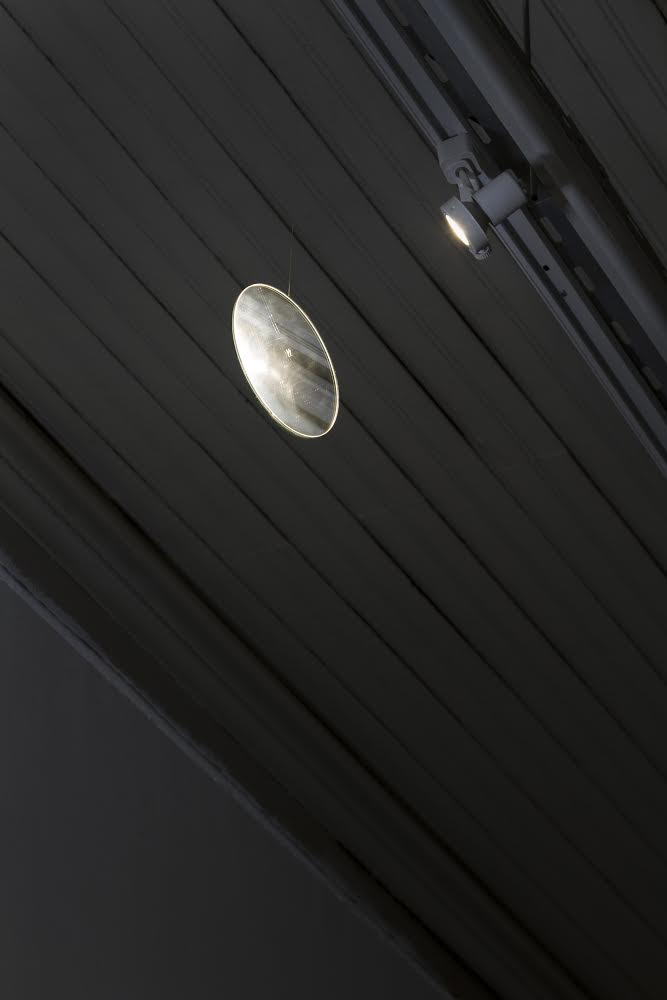








“On Sol 5,111, or June 10, 2018, the Mars Rover Opportunity sent its last image to Earth. By that date, it had been roaming the planet for fourteen years, whereas its original NASA-designed mission was only to last for ninety days. Surpassing its lifespan by almost 1.5 decades, Opportunity wandered the planet alone after its twin Rover, Spirit, died.
In June 2018, a dust storm on Mars covered Opportunity’s solar panels, disabling its ability to clean them and leaving it without any source of electricity. The last picture it transmitted to Earth ends midway, as the signal to the Rover ceased before it could send the entire image. The photograph is divided into two parts, an upper section of grey static, and a lower section for which visual data was lacking, rendering this part of the photograph black. The resulting composition is reminiscent of the traditional proportions of a landscape photography.
For her new series of works titled Opportunity Last Image (2020), presented at Die Ecke Arte Contemporáneo, Brittany Nelson appropriated this image and developed it 42 times as silver gelatin prints. Utilizing the historical photographic process, still appreciated today for its tonal range attained by silver halide crystals in the paper, Nelson presents the image with different exposures. The range is achieved by regulating the amount of light coming into contact with the paper and silver crystals. Some prints are almost entirely black, while others seem to disappear as ghostly silhouettes. The series is mounted on the wall with silver mylar tape, the same kind that NASA uses in its space missions. Presented in a methodical line, Nelson seems to be searching for meaning in this last transmitted image, attempting to reveal, through different amounts of light, some clue or hidden message.
Installed on the floor of the space is Opportunity Starry Rift (2020). The work is comprised of four mounds of black aggregate of different scales, with prints produced in the photographic process of bromoil lying loosely on top of them. Bromoil was used by the Pictorialist art movement in the early twentieth century and revered for its aesthetic proximity to painting. In this process, silver gelatin prints are bleached and, in a subsequent step, ink is applied by hand with a brush. The darker parts of the print absorb more ink, thus creating a photographic image that seems almost painterly. The photograph Nelson used is the same last image sent from Mars by Opportunity. The ink blots are applied in different intensities on each of the prints. The varying degree of hues of black spots covering the paper, as well as the differently scaled mounds of black rock on the ground, are reminiscent of the way the Rover’s solar panels were gradually coated by dust.
Circling the space is the reflection of a light that scans the walls like a searchlight. The moving spot calls to mind the search for a sign of the lost Rover, or possibly the Rover’s wandering through space. A lesbian artist, Nelson considers the Rover as a gay icon of a lonely traveler in search for a companion. The title of the exhibition, The Starry Rift, is inspired by the science fiction writer James Tiptree Jr.’s collection of short stories from 1986. The title refers to an area of the sky which is soaked in darkness, without any stars visible. Tiptree was the pseudonym of the author Alice B. Sheldon, who adopted a male pen name to insulate herself against the misogyny in science fiction circles, and to be able to write about her own lesbian desires. Many of Nelson’s most recent works are inspired by her research into Sheldon’s legacy and persona. In introducing Sheldon into her photographic work, Nelson pursues the path of queer abstraction, of that which cannot or does not want to be represented, to evade capture.”
-Stefanie Hessler, exhibition curator